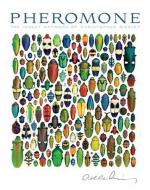|
This section contains 734 words (approx. 3 pages at 300 words per page) |

|
Pheromones are volatile chemical compounds secreted by insects and animals. They act as chemical signals between individuals influencing physiology and behavior in a manner similar to hormones. Pheromones are important to a variety of behaviors including mate attraction, territorality, trail marking, danger alarms, and social recognition and regulation.
The term pheromone is derived from the Greek words pheran (to transfer) and horman (to excite). In animals, they are produced in special glands and are released through body fluids, including saliva and perspiration. Most pheromones are biogenetically derived blends of two or more chemicals that must be emitted in exact proportions to be biologically active.
There is a remarkable diversity in the stereochemistry of pheromones. Insects are sensitive to and utilize chirality to sharpen the perception of pheromone messages. The configurations of pheromones are critical. Stereoisomers of pheromones, for example, can also be inhibitors of the pheromone action.
Pheromones...
|
This section contains 734 words (approx. 3 pages at 300 words per page) |

|


